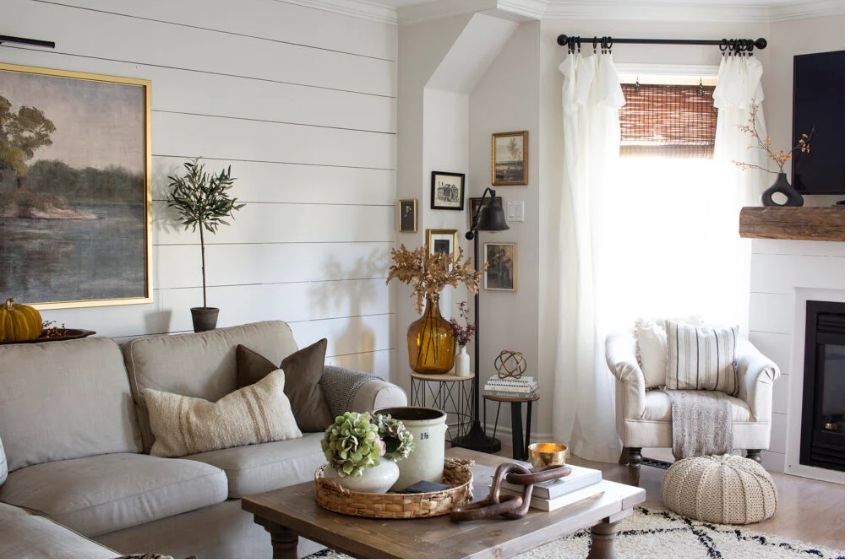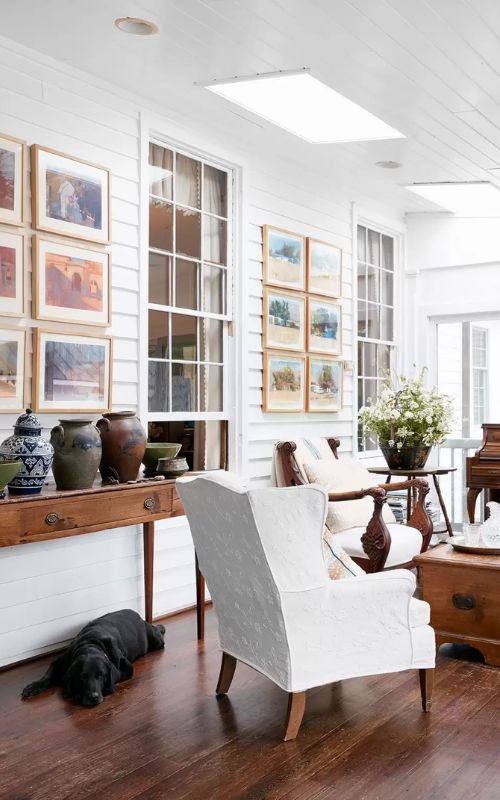
Introduction to the importance of transitioning decor seasonally
Decorating your home is a way to express your personal style and create a cozy and inviting atmosphere. As the seasons change, it is important to transition your decor accordingly to not only keep up with the latest trends, but also to create a harmonious and comfortable living space. Seasonal decor has become increasingly popular in recent years as people are looking for ways to incorporate nature into their homes and embrace the changing seasons. In this section, we will discuss the importance of transitioning decor seasonally and how it can enhance your home.

Tip 1: Start with a neutral base
One of the easiest ways to transition your decor seasonally is to start with a neutral base. This means using neutral colors, such as white, beige, grey, or even black, as the main color palette in your home. By doing this, you create a blank canvas that allows for easy changes and additions throughout the year.
Neutral colors are both timeless and versatile, making them perfect for transitioning between seasons. They act as a blank slate that can be easily refreshed and modified with seasonal accents and decorations. Plus, they provide a sense of calmness and balance to any space.
Here are some tips on how to incorporate a neutral base into your home decor:
1. Choose Lighter Shades: When selecting your neutral color scheme, opt for lighter shades instead of dark ones. Lighter shades will make the room feel more open and airy, which is perfect for spring and summer months.
3. Layer Neutrals: Don’t be afraid to layer different shades of neutrals together in one room. This adds dimension while still maintaining an overall cohesive look.
Tip 2: Incorporate seasonal colors and textures
One of the simplest and most effective ways to transition your decor seasonally is by incorporating seasonal colors and textures into your space. This can instantly update the look and feel of your home, making it feel more in tune with the changing seasons. Here are some tips for easily incorporating seasonal colors and textures into your decor.
1. Start with a neutral base: Before adding any seasonal colors or textures, it's important to have a neutral base to work with. This means choosing a color palette that is versatile and can be easily updated with different accent pieces throughout the year. Whites, grays, and natural tones such as beige or taupe are great options for creating a neutral base.
2. Use throw pillows and blankets: One of the easiest ways to add seasonal colors and textures to your decor is through throw pillows and blankets. These items are relatively inexpensive, easy to swap out, and can instantly change the look of a room. For example, during the fall months, you can incorporate warm tones like burnt orange, mustard yellow, or deep reds through decorative pillows and cozy knit blankets.
Tip 3: Switch up throw pillows and blankets
As the seasons change, it's important to not only switch out your wardrobe but also make small changes in your home decor. One easy and affordable way to do this is by switching up throw pillows and blankets. These simple accents can bring a whole new look and feel to any room in your house.
Firstly, consider the color scheme of your current throw pillows and blankets. In the spring and summer months, you may want to swap out dark or jewel tone colors for lighter, brighter shades like pastels or whites. This will give your space a more airy and refreshing vibe that is perfect for the warmer weather.
In the fall and winter, you can opt for deeper, richer colors such as burgundy, navy blue, or forest green. These hues will add warmth and coziness to your living room or bedroom during the colder months.
Tip 4: Add natural elements or plants
One of the easiest and most effective ways to transition your decor seasonally is by incorporating natural elements or plants into your home. Not only do they bring a touch of nature indoors, but they also add a sense of freshness and life to any space. Here are some tips on how to use natural elements and plants in your seasonal decor.
1. Incorporate Seasonal Foliage
The changing seasons bring about beautiful foliage that can be used in your home decor. In the spring, consider using blooming flowers such as tulips, daffodils, and hyacinths for a burst of color. During the summer months, you can opt for vibrant greenery like ferns or succulents to add a tropical vibe. In the fall, incorporate autumnal leaves and branches for a cozy feel, while winter calls for evergreen branches and holly berries.
2. Use Fresh Cut Flowers
Fresh cut flowers not only add beauty but also make your home smell amazing. You can easily switch up the types of flowers you use depending on the season. For example, during springtime opt for pastel-colored peonies or roses while in autumn you can use sunflowers or chrysanthemums in rich warm tones.
Tip 5: Utilize seasonal scents and candles
As the seasons change, it's important to not only switch up your decor but also the scents in your home. Utilizing seasonal scents and candles is a great way to add a cozy and festive touch to your space. Here are some tips for incorporating seasonal scents and candles into your decor:
1. Choose scents that reflect the season: When selecting candles or diffusers for each season, think about the scents that are associated with that time of year. For example, in the fall you might opt for warm and spicy scents like cinnamon, pumpkin, or apple cider. In winter, you may prefer pine or peppermint scents to evoke a holiday feel.
2. Mix and match different scents: Don't be afraid to mix different scented candles or diffusers in one room to create a unique scent profile. Just make sure they complement each other and don't clash.
3. Consider using natural options: Instead of traditional store-bought candles, consider using essential oils or making your own soy-based candles using natural ingredients such as dried herbs or flowers from your garden.
Tip 6: Swap out wall art or accents
One of the easiest and most impactful ways to transition your decor seasonally is by swapping out your wall art or accents. These small changes can make a big difference in the overall look and feel of a room, giving it a fresh and updated vibe without having to completely redecorate.
Here are some tips for effectively swapping out your wall art or accents:
1. Start with a neutral base: When choosing wall art or accents, it's best to start with a neutral base. This means opting for pieces that have colors and patterns that can easily complement any season. For example, choose artwork with muted tones or geometric patterns that can work well for both spring and fall.
2. Incorporate seasonal colors: Once you have a neutral base, you can incorporate seasonal colors through smaller accent pieces such as throw pillows, vases or candles. This will add pops of color and bring in the seasonal vibes without overwhelming the room.
3. Mix and match textures: Another way to add depth and interest when switching out wall art or accents is by mixing different textures. For example, in the summer months, you can swap out heavy wool pillows for lighter linen ones; in the winter, opt for chunky knit blankets instead of thin cotton ones.

Tip 7: Don't forget about outdoor spaces!
As the weather changes, it's important to remember that your outdoor spaces are just as much a part of your home as the inside. Don't neglect these areas when transitioning your decor seasonally! With a few simple tips and tricks, you can easily update your outdoor spaces to match the changing seasons.
1. Swap out pillows and cushions: One of the easiest ways to transition your outdoor decor is by changing up the pillows and cushions on your patio furniture. In colder months, opt for cozy textures like faux fur or chunky knits, while in warmer months, choose lighter materials like cotton or linen. You can also switch up the colors and patterns to reflect the season – think warm earth tones for fall and bright florals for spring.
2. Add seasonal plants: Incorporating seasonal plants into your outdoor space is a great way to bring in natural elements and add a pop of color. In fall, consider adding mums or pumpkins to your front porch, while in summer you can fill your patio with vibrant flowers like geraniums or petunias.
3. Utilize lighting: As the days get shorter, it's important to have proper lighting in your outdoor space for both functionality and ambiance. Consider adding string lights or lanterns for a cozy feel during autumn evenings, or use solar-powered pathway lights for an eco-friendly touch in summer.


